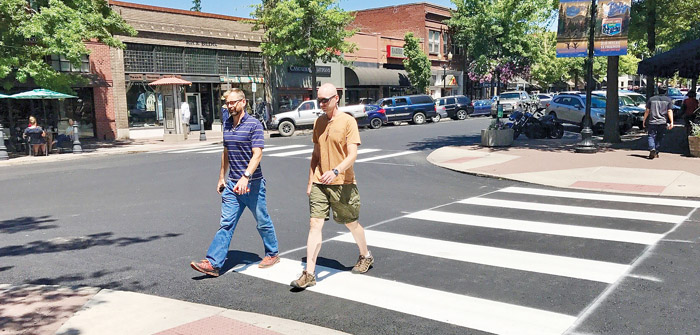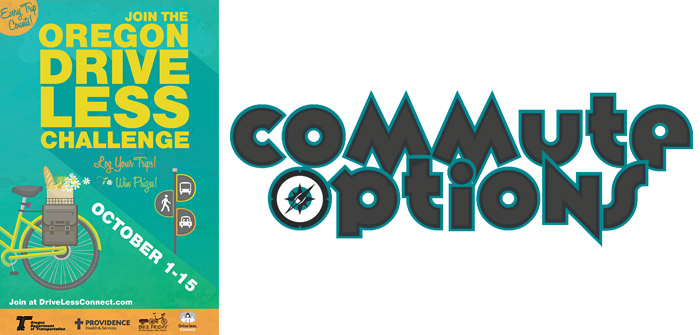Around the country, travel demands are changing. An aging population of baby boomers, rising fuel costs, increasing urbanization, increasing traffic congestion, changing consumer preferences and increased health and environmental concerns are all reducing the demand for automobile travel. Residents are seeking livable communities with “complete streets” that include traffic slowing measures, public transportation opportunities and safe walkways and bike lanes.
Multi-modal transportation that includes public buses, cycling and walking, is the new way to design our urban landscapes. “Investing in planning, infrastructure, policies and programs that support active transportation are good investments that benefit everyone in our community,” says Commute Options Executive Director Jeff Monson.
The Lloyd District in Portland exemplifies a business district that is thriving with a robust transportation options plan that includes reduced parking, increased biking, walking and public transportation. In 1997, about 80 percent people traveled by car to the Lloyd District, creating serious traffic and congestion problems. By 2011, that number was down to 43 percent, while still maintaining a very low 4-6 percent business vacancy rate. Also in 1997, developers were building 3.5 parking stalls per 1000 square feet. They are now building closer to 1.8 spaces per 1000 square feet – leaving more room for actual business activity. A testament that more parking does not always equate to more business.
Businesses benefit directly from greater pedestrian and cycling activity with increased retail performance. A study done in 2013 by the Oregon Transportation Research and Education Consortium found that “people who arrive by bike, on foot or by transit spent more per month than those customers arriving by car at corner stores, restaurants and bars; only at grocery stores did people arriving by car spend more per month.”
Consider this—one parking space, for only one car, can cost between $10,000 and $20,000 to build. That parking space can also hold 10-12 bicycles at any given time. We often don’t think of the true cost of parking in this sense. This cost is then transferred to the business owner in the form of higher rents, and eventually to the consumer in higher merchandise prices.
Local citizens can save money by using transportation options. When we have safe places to bike and walk, and safe and efficient public transportation, we can ditch the car for some trips. Using your car less, or having one less car, saves money because you spend less on maintenance, insurance and fuel–leaving more money to go back into the community and local businesses. Increased biking, walking and transit options are also easier on our roadways, requiring less maintenance costs over time. Local governments and municipalities get a bigger bang for their buck when they invest in active transportation improvements.
There are so many good reasons to support multi-modal transportations that benefit everyone in Central Oregon. Find out more by contacting Commute Options.
Commute Options promotes choices that reduce the impacts of driving alone. For more information, contact Executive Director, Jeff Monson at 541-330-2647 or visit www.commuteoptions.org
Katy Bryce is a freelance writer in Bend. www.katybryce.com





